When Home is Not a Safe Haven for Children

A staggering 25 percent of all children worldwide witness domestic violence even before they have turned five. Almost half of them become DV victims themselves. With domestic violence occurring in 40 percent households in the South Asian community, there is an urgent need for attention towards these silent sufferers who not only face systemic challenges due to immigration and legal structure but also devastating long-term effects on their physical and mental health.
- Content Warning/Trigger Warning: domestic violence, violent imagery, language, abandonment, mental and physical health, depression anxiety, trauma.
- Names have been changed to protect the identity of the survivors.
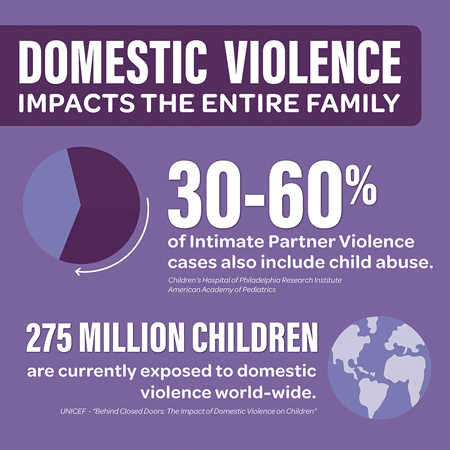
In an Atlanta suburb, seven-year-old Varun hid in the closet with his puppy as the room around him exploded with the whimpering of his mother. He had seen his father shout at his mother before kicking her to the floor.
Later, when his mother opened the door to the closet, she found him holding his hands to his puppy’s ears. “I didn’t want him to be scared,” Varun said as he held back his own tears.
Varun, who is now 15, still has difficulty expressing his fears. Diagnosed with Post Traumatic Stress Disorder (PTSD), he fears abrupt sounds, loud noises, and closed spaces. Even after many years, he is still trying to break out of the shell that he had withdrawn into as a child.
On the opposite side of the city, staying with her parents and elder siblings, five-year-old Naina had often seen her mother cry. She didn’t know what cancer was, but she knew her mother was suffering. Sometimes it was pain from cancer that was ravaging her body. At other times, it was the pain that Naina’s father was inflicting upon her. She had seen her mom being pushed and held captive against the wall.
Naina and her siblings too, just like their mother, found themselves being pushed against the wall by their father. When their father said he would hit them, they believed him. Their mother’s bruises were imprinted in their memory. Naina, who is now 13, continues to have nightmares about her mother’s bruises.
Ritesh, an Indian-American physician, now 50 years old, is still traumatized by the domestic violence he witnessed—and was subjected to—as a child. Diagnosed with Complex PTSD and Dissociative Disorder, he shares memories of violence at home and the isolation he faced outside. “It has taken me all these years to understand the trauma that I have carried throughout my life,” he says.
Intergenerational cycle of domestic violence
In a community where children are considered so precious, how is it that many parents have become aggressors instead of compassionate guardians? Research points to the normalization of abuse as the culprit. Says Ritesh, “Both my mother and father went through abuse as children. That normalized it for them.” The same is true for many of us in the community.
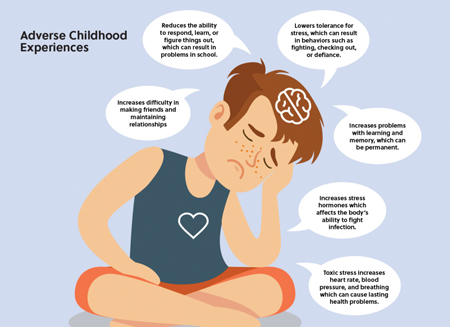
Varun’s father too had been a victim of domestic violence as a child. He learned to perpetuate the generational cycle of abuse. Recalls Leela, Varun’s mother, “He often talked of being badly hit during his childhood. My heart went out to him every time I heard that. But instead of realizing that he should not do the same to us, he continued the pattern of abuse. He felt that as the man of the house, he needed to control everything through violence—just as he had seen his father do.”
Naina’s father too had seen his own father getting abusive with his mother, and his mother accepting the abuse. Recalls Naina’s mom, Uma, “From the very first day of walking into my marital home, I saw my mother-in-law face abuse. She had learned to accept it and her advice to me was also to be a dutiful wife and bear it.” It was so normalized for Uma’s husband that when she told him he was being abusive, he casually dismissed it. “He didn’t think of what he was doing to me as abuse,” she says.
Studies show that children who have been victimized are at a greater risk of repeating the cycle as adults by entering into abusive relationships or becoming abusers themselves. Says Dr. La Tonya Wood, Director of Clinic Training at Pepperdine University in California, “Children model what they have seen: that problems are solved through aggression, emotions are expressed through aggression, and needs are met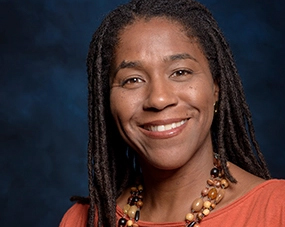 through aggression.”
through aggression.”
[Right] Dr. La Tonya Wood, Director of Clinic Training at Pepperdine University.
According to researchers Aparna Mukherjee and Sulabha Parasuraman of the International Institute for Population Sciences, “Witnessing violence between one’s parents while growing up is an important risk factor for the perpetration of partner violence in adulthood. Women become more accepting of violence. For men, the risk of perpetrating spousal violence increases. Men usually tend to take up the stereotyped gender roles of domination and control, whereas women grow up to follow the path of submission, dependence, and respect for authority throughout their life. This sets a pattern that continues through generations.”
Twenty-five percent of all children witness domestic violence
Varun, Naina, and Ritesh are among the 275 million children worldwide who witness domestic violence, according to UNICEF. One in four children under the age of five lives with a mother who is a victim of intimate partner violence (IPV), according to WHO’s Global Status Report 2020 on preventing violence against children.

The UN’s World Report in 2005 on Violence Against Children put South Asia as the region where the maximum number of children—a staggering estimate of 88 million—witnessed violence at home annually.
For South Asian children whose parents have moved to the U.S., things haven’t changed. According to community-based surveys conducted in 2002 by Anita Raj of the University of Wyoming and Neely Mahapatra of the University of California, 40 percent of South Asian women in the U.S. experience intimate partner violence (IPV). With Indians making up 80 percent of South Asian community in the U.S., this data could well apply to them.
In Georgia alone, over 21,000 children on average each year have been documented to have witnessed domestic violence, according to the Georgia Bureau of Investigation. But not all domestic abuse is reported. So even this huge number is an undercount, as per Georgia Fatality Review.
[Top] Susan Kerley, Clinical Director, Marietta Counseling.
Children who witness domestic violence suffer staggering lifetime effects
Uma recalls how she often found Naina shivering in a corner. Even at school, she was easily startled by loud noises. Often, she was bullied on the playground. While Naina became withdrawn, her elder siblings, on the other hand, opted to drown out the chaos in the house by listening to loud music. Says Uma, “The more chaotic it became, the more they tried to control it. When they couldn’t, they turned resentful, angry, aggressive.”
It is only now that the effect on children who witness domestic violence is being understood. Explains Dr. Wood, “We have previously considered children and adolescents as simply witnesses to domestic violence and not victims. But now we do know that domestic violence occurs within a close family system affecting all of those within the system.”
Recent studies show that by witnessing domestic violence, children are affected not just emotionally, behaviorally, socially, and academically but also cognitively and physically. In fact, children are affected even before their birth if the mother experiences abuse.
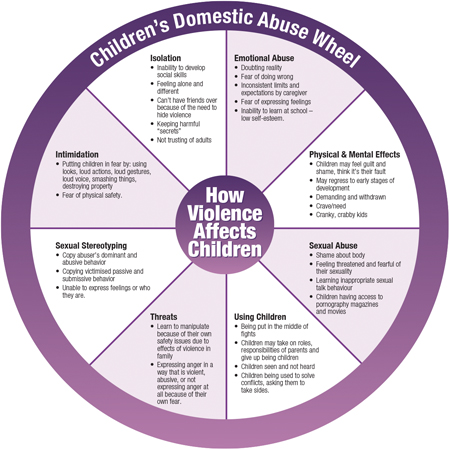
As the effect of witnessing domestic violence is being understood more, it features prominently as one of the Adverse Childhood Experiences (ACEs)—a set of potentially traumatic events that may occur in childhood—according to the Center for Disease Control and Prevention (CDC). Besides experiencing violence, abuse, or neglect, ACEs include other traumatic events such as the divorce of parents or the death of a loved one.
Gabrielle Green, who was Child & Youth Project Director at Georgia Coalition Against Domestic Violence, said, “Children who have been exposed to domestic violence and other ACEs have a higher risk of long- term mental and physical health issues, suicide ideation and attempts, anti-social behavior, and experiencing or perpetrating domestic violence.”
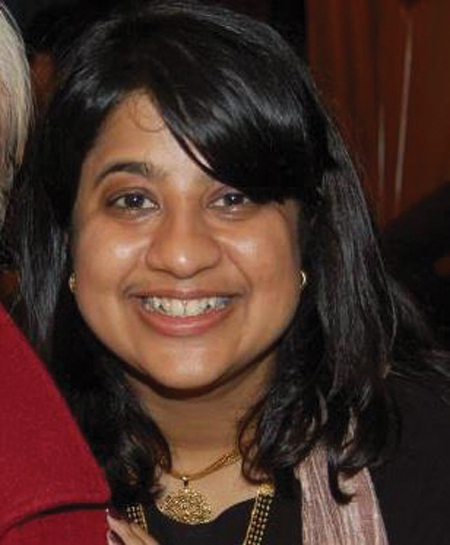
Children growing up with toxic stress may have difficulty forming healthy and stable relationships. Says Susan Kerley, Director, Marietta Counseling, “Trauma can be debilitating for a child. Violence at home, especially, leaves a child very traumatized and it comes up in many ways.”
There is a higher risk of engaging in impulsive, reckless, or self-destructive behavior such as substance abuse, running away, involvement in violent or abusive dating relationships, inappropriate aggression or significant withdrawal, over or underestimating danger, self-harm, and suicidal ideation. Depending on the age of the child, witnessing violence and the aftermath of violence may lead them to hide, escape, or try to engage with the abusive parent putting themselves in danger.
[Left] Aparna Bhattacharyya, Executive Director, Raksha.
According to Green, “As they are growing, children are particularly vulnerable because they are unable to anticipate or prepare for danger. They have no control over trauma from occurring and they have fewer coping skills. They also have confusing and conflicting feelings as they don’t fully understand what has happened.”
Echoes Crystal Gossett, Victim Advocate, Special Victim’s Unit at Cobb County District Attorney’s Office in Georgia, “We see children who were victims come back after years to see the records. As adults, they want to know their history and understand what happened.”
According to Dr. Nadine Burke Harris, ex-Surgeon General of California, children with ACEs score of six and more are at risk of lowered life expectancy by as much as 20 years!
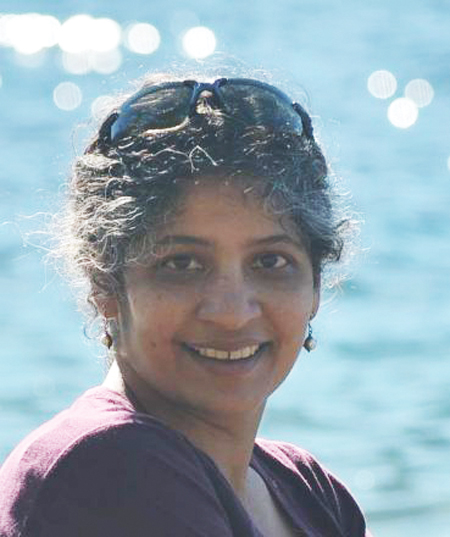
Almost half of the children in DV also end up being abused
Often, children are not just witnesses to domestic violence, but end up being directly abused themselves, as was the case with Naina and Ritesh. According to the Children’s Hospital of Philadelphia Research Institute, 30 to 60 percent of intimate partner violence (IPV) cases include child abuse.
[Right] Swati Bakre, Clinical Psychologist specializing in helping children overcome trauma.
Swati Bakre, a Chicago-based Clinical Psychologist, says, “Child abuse can take many forms, especially in domestic violence cases since a parent is a natural authority figure for the child.” The Duluth Model of Domestic Violence, which explains power and control in an abusive relationship, categorizes child abuse as physical and mental abuse, sexual abuse, emotional abuse, intimidation, isolation, and threats. This could show up as humiliation, verbal abuse, putting children down, threatening to leave, controlling who they talk to, and destroying things.
At the Federal level, the Child Abuse Prevention and Treatment Act (CAPTA) has defined child abuse and neglect as “any recent act or failure to act on the part of a parent or caregiver that results in death, serious physical or emotional harm, sexual abuse, or exploitation, or an act or failure to act that presents an imminent risk of serious harm.” As defined in Domestic Violence Civil Laws in Georgia, the term “family violence” shall not be deemed to include reasonable discipline administered by a parent to a child in the form of corporal punishment, restraint, or detention.
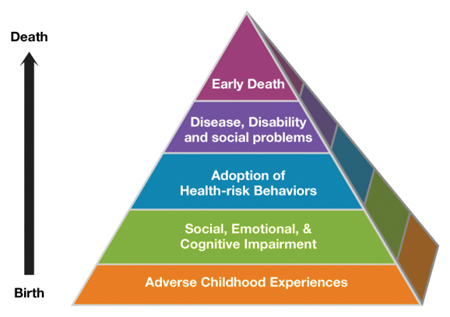
[Top] Victims of child abuse are at a risk of lowered life expectancy by as much as 20 years!
Even as children face abuse, they are dependent on their caregivers to provide them with the safe environment they need. Says Aparna Bhattacharyya, Executive Director of Raksha, a nonprofit that supports victims of domestic violence, “So many mothers facing domestic violence in the community stay on because they want children to have a family. It takes time to realize that children are actually being harmed by staying in an abusive environment, and we support them during this process.”
For Leela, it took her son Varun trying to run away from home to realize the effect it was having on him. “I was staying to provide him with a family life. But when he tried to run away, I was shocked. That day, I knew I had to leave.”
Sharing child custody with an abusive ex-partner
Uma and Leela stepped out of their respective marriages to give their children a safe environment. But all their progress has been nullified as they struggle with the challenges of sharing custody with the abusive parent. “I am now out of my marriage and safe, but my child has to endure this throughout his childhood till he turns 18,” says Leela.
Uma, who went through divorce to provide a safe environment for herself and her children, is devastated that the courts have granted joint custody to both parents. “Every week they are on visitation and are dragged into that same toxic environment. They don’t want to visit and yet I am forced to send them,” she says.
Subjected to a starkly contrasting dual parenting mode, children end up becoming pawns in the cycle of abuse and control. “We see instances of counter- parenting as one of the ways the abusive parent tries to control and continue the post-separation abuse. Financial abuse is very common too. One of the ways, for example, could be the abusive parent denying children access to therapy,” says Aisha Choudhry, Child Therapist, Raksha.
[Right] Sirpa Vigdorov, Chairperson of Cobb County Domestic Violence Taskforce and Victim Advocate Supervisor at Cobb Judicial Circuit.
Uma agrees. Bound by the court order, she feels helpless “If I try to seek therapy for the kids, their father refuses to pay his share of the expenses. He says that it is no use and tries to stop the process. Every step I take to move myself and the children forward, he pulls us back two steps.” “The abusive parent may also be worried about what children may say,” says Choudhry.
When Nalini, another Atlanta-based mother who stepped out of an abusive marriage, moved away with her kids, she was able to snap off ties with her ex-husband and bring up her children in a safe environment. Her children have now grown up to be successful adults. “It helped a lot to have a single parent guiding them. Now when they meet their father and he gets abusive, they know when to move away,” says Nalini.
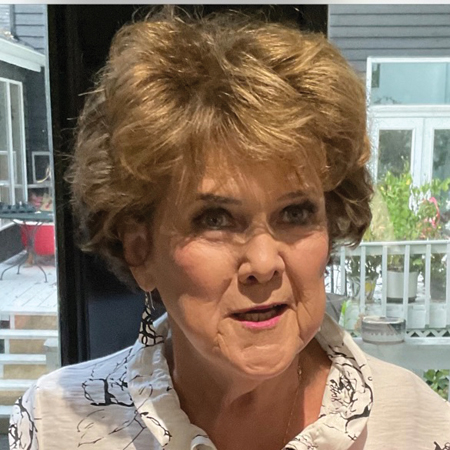
The court system is challenging for child victims
Often, Uma’s children have come back and reported being slapped or pushed. For her, it brings back all the pain and helplessness that she went through during her marriage. But her numerous attempts to bring it to the court’s notice have failed. Despite children’s psychological evaluation reports that prove how children have been impacted, the courts have refused to modify the custody. Her plea for shorter visitation time with the father was also dismissed by the court.
[Left] Marian Weeks, Guardian Ad Litem, Georgia.
Says Marian Weeks who serves as a Guardian Ad Litem in Georgia, “My full commitment is to protect the child in all cases. It depends on the severity of the case that access to any of the parents is restricted by the court. The first approach is to offer counseling on parenting.”
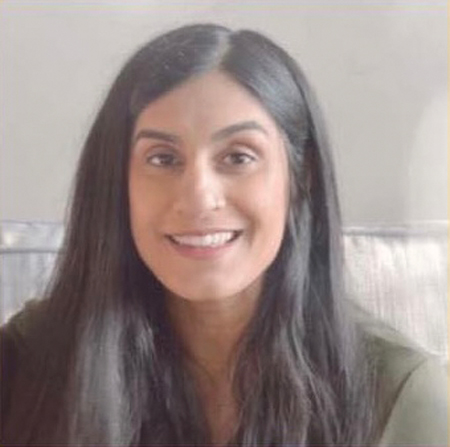
Uma says the process can be easily manipulated. “Every time their dad says he was trying to discipline the children and he is for-given for hurting them. Their father even skipped counseling by saying he was busy with work and was let off,” says she.
[Right] Aisha Choudhry, Child Therapist, Raksha.
Immigration becomes another tool in the hands of the abusive parent to exercise control. When Leela wanted to move back to India after her divorce, she could not. “I was threatened with charges of kidnapping my own children if I left,” says she.
For mothers who face such threats, Sirpa Vigdorov, Chairperson of Cobb County Domestic Violence Taskforce and Victim Advocate Supervisor at Cobb Judicial Circuit, says, “We offer help and support to anyone being victimized, irrespective of their nationality or immigration status.”
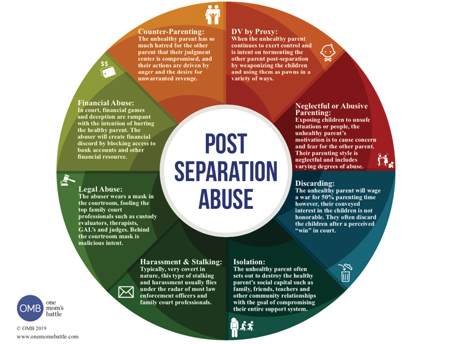
In abusive relationships, abuse doesn’t stop. It transitions to post separation abuse. Picture courtesy: One Mom’s Battle.
The limits of official, systematic help
Says Jessica Hines, Victim Advocate, Special Victim’s Unit at Cobb County District Attorney’s Office in Georgia, “Of the child abuse cases that we see in our work, many of them are victims of domestic violence. We provide guidance through the court process for children in case of assault.”
With only serious cases of assault provoking court action, a vast majority of children are left unprotected. Says Varada Divgi, pediatrician and ex-Board Member, Childhood Domestic Violence Association, “We are mandatory reporters if we notice child abuse. But
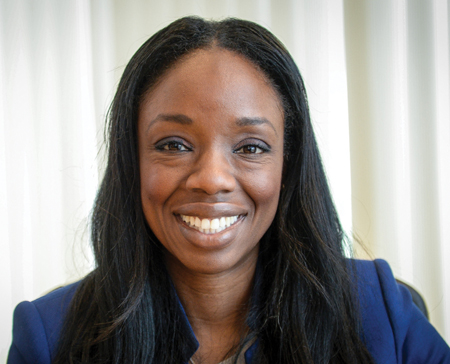 physical abuse like slapping, shoving, and pushing often goes physically unmarked and children often don’t have the language to explain what has happened to them. We do see other signs like unexplained headaches, stomach aches, asthma attacks, vomiting, weight gain, or lack of interest in any activity. Our systems give attention to physical trauma, but no scar is visible for emotional trauma.”
physical abuse like slapping, shoving, and pushing often goes physically unmarked and children often don’t have the language to explain what has happened to them. We do see other signs like unexplained headaches, stomach aches, asthma attacks, vomiting, weight gain, or lack of interest in any activity. Our systems give attention to physical trauma, but no scar is visible for emotional trauma.”
Ritesh’s trauma pushed him into drug and alcohol addiction. “I was still in school when I started drinking alcohol. I just wanted to numb everything out,” says he.
[Right] Dr. Nadine Burke Harris, ex- Surgeon General of California.
According to Paulo Sergio Pinheiro, Expert for the United Nations Secretary General’s Study on Violence Against Children, “Our failure to listen to children has resulted in a failure to respond to their needs. It is hard to understand why and how adults can continue to argue that children should have less protection from violence than adults do: in law, in policy, and in practice.”

Healing through Positive Childhood Experiences
There is a ray of hope, however, according to Dr. Harris. “While the trauma is intense and hard to understand as a child, it is also possible to overcome the trauma as the brain and the body is still developing. This is the promise and the hope—that when we intervene early with the kids with brain development still happening, we can still do healing work,” she says.
[Left] Dr. Christina D. Bethell of Johns Hopkins Bloomberg School of Public Health.

Through responsive and sensitive caregiving, it is possible to develop resilience in the child who has witnessed or experienced abuse. A very important aspect is restoring a sense of safety and protection within a consistently nurturing and trustworthy relationship.
[Right] Leiana Kinnicutt, Program Director of the Children and Youth Program at Futures Without Violence.
Ritesh, who now has two grown children, agrees. “My own experience as a child made me want to bring up my children in a safe family environment. Of course, just like other children, my children have their own challenges but those challenges are not related to an unsafe environment at home.” Through his journey of self-awareness, Ritesh has been able to successfully break the intergenerational cycle of domestic violence.
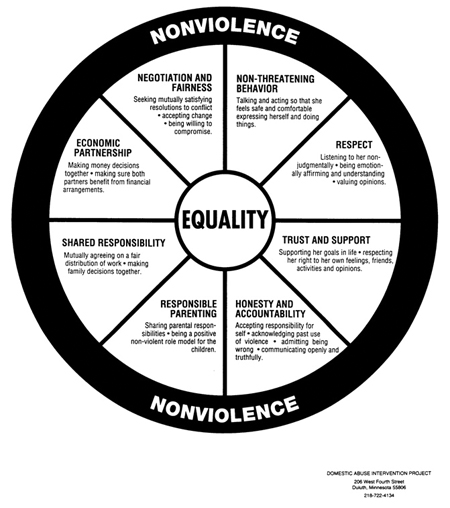
In her HOPE (Health Outcomes from Positive Experiences) Project, Dr. Christina D. Bethell of Johns Hopkins Bloomberg School of Public Health discusses the powerful effect of Positive Childhood Experiences (PCEs) in countering the effect of ACEs. These PCEs include nurturing and supportive relationships where caregivers are attuned and responsive to a child’s needs. She also emphasizes constructive social engagement and connectedness. This may stem from participation in sports, music groups, or engagement in different community projects, service opportunities, or participation in cultural or spiritual traditions with family.
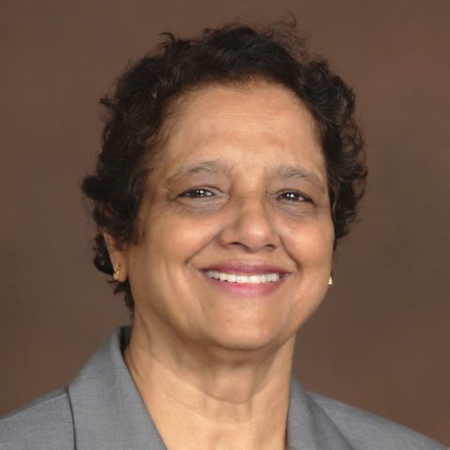
[Top] Varada Divgi, pediatrician and ex-Board Member, Childhood Domestic Violence Association.
Cultural connections are also what Leiana Kinnicutt, Program Director of the Children and Youth Program at Futures Without Violence, wants to focus on. “There’s a national shortage of trained and culturally-sensitive staff. A real call to action to social work programs and educational higher institutions is to open up more doors for folks from the community,” says she.
Need for community intervention
Discussing the need for community intervention, Bhattacharyya shares, “I see survivors work hard to provide the children with the support that they need. Our community should also help them. Instead, they often go through isolation.” It takes a village to raise a child and fostering that connectedness with the larger community and traditions is especially important for single immigrant mothers. “When mothers feel isolated, they often start talking and sharing their challenges with their children. It ends up retraumatizing the children. Mothers in our community need their own support groups and riends,” says Bakre.
The stigma attached to mental health in Indian American community is another challenge that mothers have to contend with. Says Chowdhary, “The community is slowly coming around to therapy. But they don’t 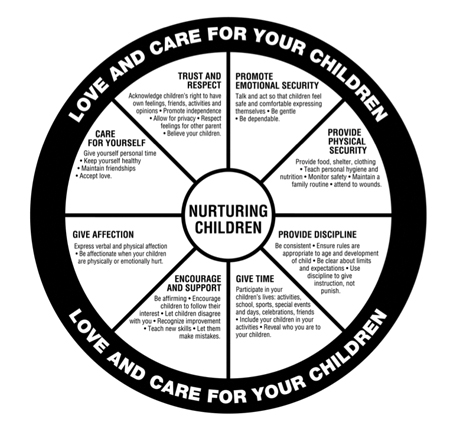 realize that there is improvement work involved outside. They also don’t realize that often it may require combining it with medication. But they resist it because log kya kahenge? What will people say? We try and help children through various modes of therapy such as DBT, CBT, Somatic Experiencing Therapy. Often, we combine these with play therapy. Children don’t have the tools to express, or they don’t want to express, or they are scared. They haven’t seen good examples. We can help them regulate their emotions while playing.”
realize that there is improvement work involved outside. They also don’t realize that often it may require combining it with medication. But they resist it because log kya kahenge? What will people say? We try and help children through various modes of therapy such as DBT, CBT, Somatic Experiencing Therapy. Often, we combine these with play therapy. Children don’t have the tools to express, or they don’t want to express, or they are scared. They haven’t seen good examples. We can help them regulate their emotions while playing.”
Nurturing Children Wheel by Domestic Violence Intervention Program, Duluth, MN describes a nurturing relationship between children and caregivers.
As a community, we need more conversations about these topics and to be more inclusive and accepting. By empowering and creating support structures, we can help make a difference for these families. “In my years at Raksha, I have seen kids from abusive environments who have grown up to be healthy secure adults,” says Bhattacharyya. By continuing the healing work, they have been able to overturn the intergenerational cycle of abuse.
Read the first story in this series on domestic violence in South Asian community here on the website.
Read narratives from some survivors who were part of the three-months-long storytelling workshop as part of this initiative here on the website.
City and Community Engagement Editor at Khabar, Pooja Garg is USC Fellow for Domestic Violence Impact Writing and Community Storytelling. An award-winning journalist, author, and poet, she is founder and chief editor of The Woman Inc. and member of Cobb County Domestic Violence Taskforce. Write to her at pooja@khabar.com.Says Green, “The single most critical factor in how children weather exposure to domestic violence is the presence of at least one loving and supportive adult in their life.” For many children, that loving and supportive adult is their mother. Other adults—grandparents, foster parents, teachers—can also take on this role.
Enjoyed reading Khabar magazine? Subscribe to Khabar and get a full digital copy of this Indian-American community magazine.
blog comments powered by Disqus











